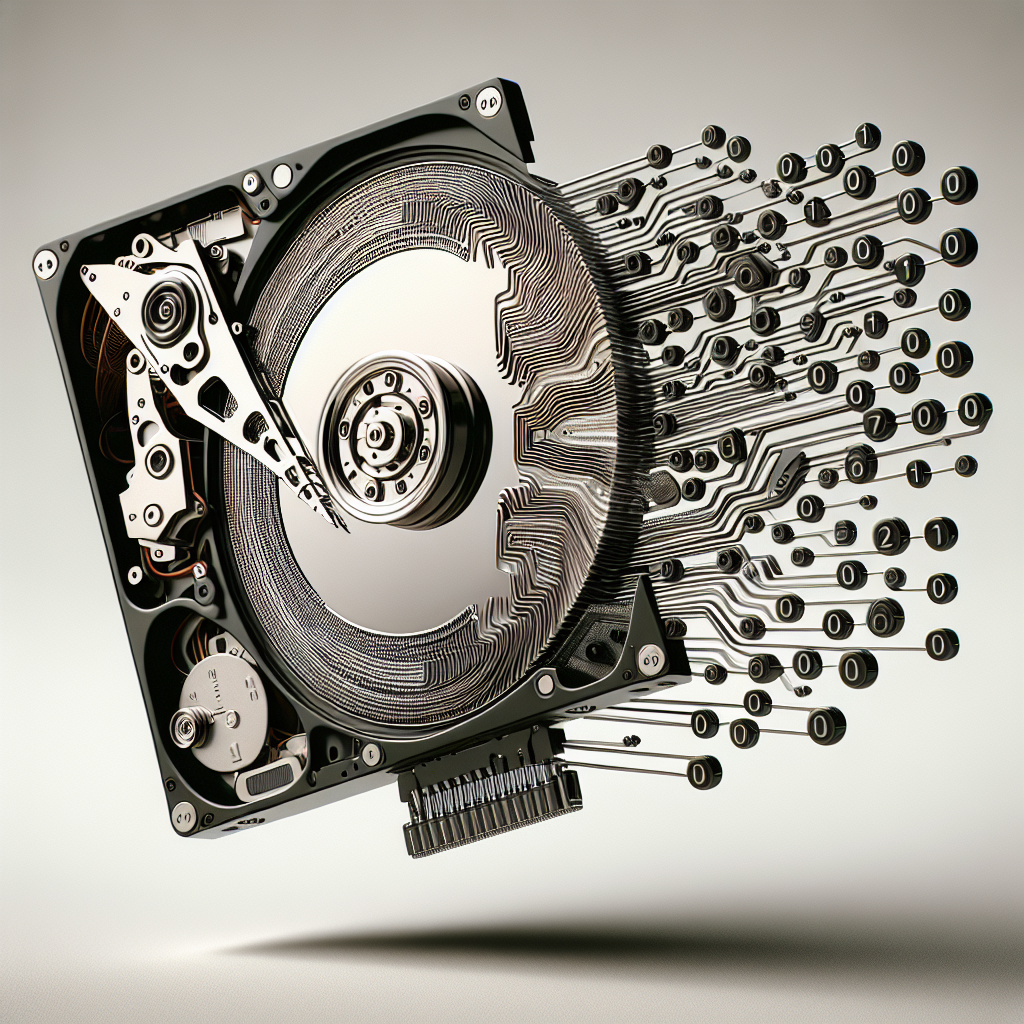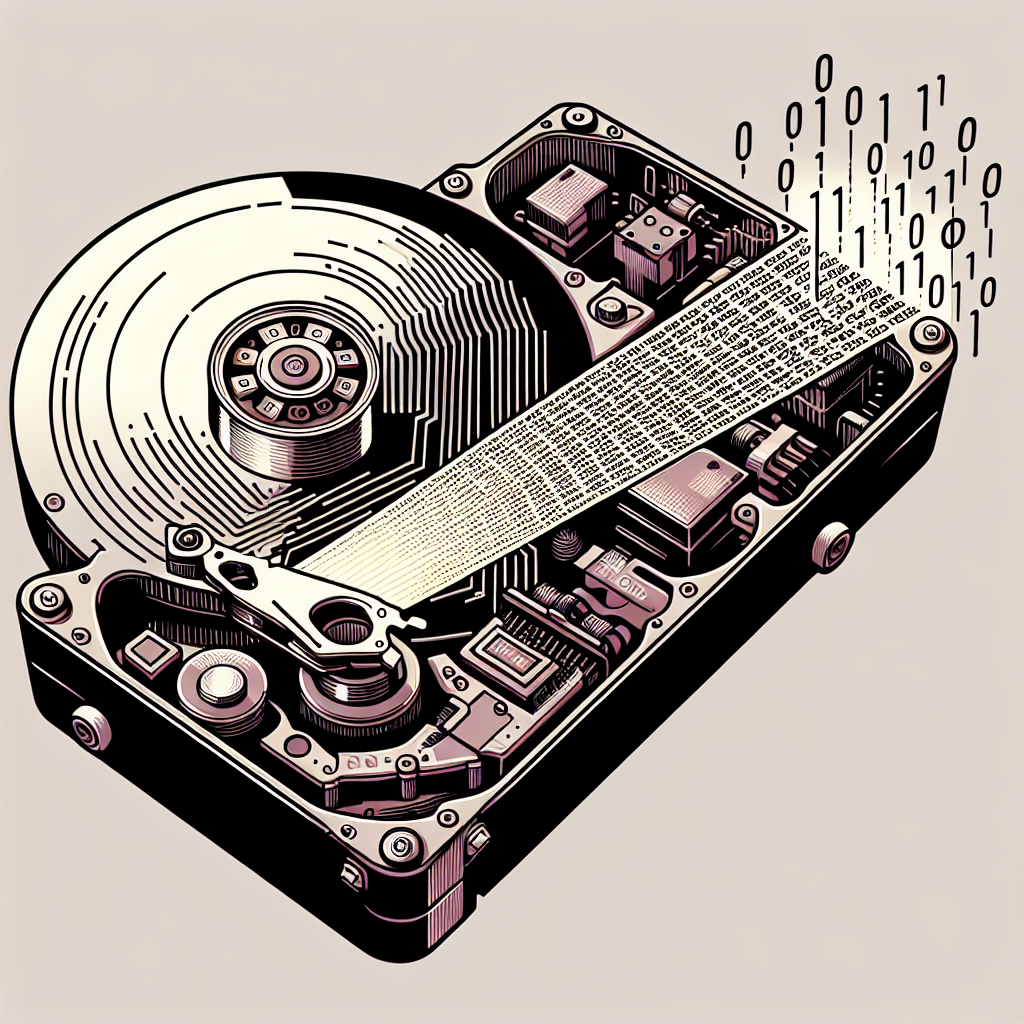Your cart is currently empty!
Tag: Accessed

Exploring the Inner Workings of a Hard Disk Drive: How Data is Stored and Accessed
In today’s digital age, hard disk drives (HDDs) play a crucial role in storing and accessing vast amounts of data. These devices are found in almost every computer, laptop, and server, and are essential for storing everything from operating systems and applications to documents, photos, and videos.But have you ever wondered how data is actually stored and accessed on a hard disk drive? In this article, we’ll explore the inner workings of an HDD and explain the intricate process of storing and retrieving data.
At the heart of a hard disk drive is a spinning platter coated with a magnetic material. This platter is divided into billions of tiny areas called sectors, where data is stored in the form of magnetic patterns. A read/write head hovers just above the platter, moving back and forth to read and write data to specific sectors.
When data is written to a hard disk drive, the read/write head magnetizes the surface of the platter to represent binary 0s and 1s, the building blocks of digital information. These magnetic patterns are then stored on the platter until they are accessed again.
To retrieve data from a hard disk drive, the read/write head locates the specific sector where the data is stored and reads the magnetic patterns to reconstruct the original information. This process happens incredibly fast, with the read/write head moving at speeds of thousands of revolutions per minute to access different areas of the platter.
One of the key factors that determines the performance of a hard disk drive is its speed, measured in rotations per minute (RPM). Higher RPM drives can access data more quickly, making them ideal for applications that require fast read and write speeds.
In addition to speed, the capacity of a hard disk drive is also an important consideration. Modern HDDs can store terabytes of data, making them suitable for storing large files such as videos, games, and high-resolution photos.
While hard disk drives have been a staple of computing for decades, they are gradually being replaced by solid-state drives (SSDs) in many applications. SSDs use flash memory to store data, offering faster read and write speeds and greater durability compared to HDDs. However, HDDs continue to be popular for their affordability and high storage capacities.
In conclusion, the inner workings of a hard disk drive are a fascinating blend of mechanical and magnetic technologies that enable us to store and access vast amounts of data. By understanding how data is stored and accessed on an HDD, we can appreciate the complexity and precision that goes into this essential component of modern computing.

Understanding the Mechanics of a Hard Disk Drive: How Data is Stored and Accessed
A hard disk drive (HDD) is a critical component of any computer system, responsible for storing and accessing data. Understanding the mechanics of a hard disk drive can help users appreciate how data is stored and accessed on their computers.At its core, a hard disk drive consists of several key components that work together to store and retrieve data. These components include platters, read/write heads, a spindle, and a motor.
The platters are the circular disks inside the hard drive where data is actually stored. These platters are coated with a magnetic material that allows data to be written and read using the read/write heads. The read/write heads are small electromagnets that move across the surface of the platters to read and write data.
The spindle is the mechanism that spins the platters at high speeds, typically between 5,400 and 7,200 revolutions per minute. This high-speed rotation is crucial for accessing data quickly and efficiently. The motor is responsible for spinning the spindle and keeping the platters in constant motion.
When data is written to a hard disk drive, the read/write heads magnetize small regions on the platters to represent binary data. The data is stored in sectors, which are small, fixed-size units of storage on the platters. Each sector is typically 512 bytes in size.
When data needs to be accessed, the read/write heads move to the appropriate location on the platters and read the magnetic signals to retrieve the data. The speed at which data can be read or written is determined by the rotational speed of the platters, the seek time (the time it takes for the read/write heads to move to the correct location), and the transfer rate of the drive.
Understanding the mechanics of a hard disk drive can help users appreciate the complexity and precision of these devices. By understanding how data is stored and accessed on a hard disk drive, users can make informed decisions about how to best manage and optimize their storage systems.
In conclusion, the mechanics of a hard disk drive are crucial for understanding how data is stored and accessed on a computer system. By familiarizing themselves with the key components and processes involved in a hard disk drive, users can better appreciate the importance of these devices in their everyday computing tasks.
